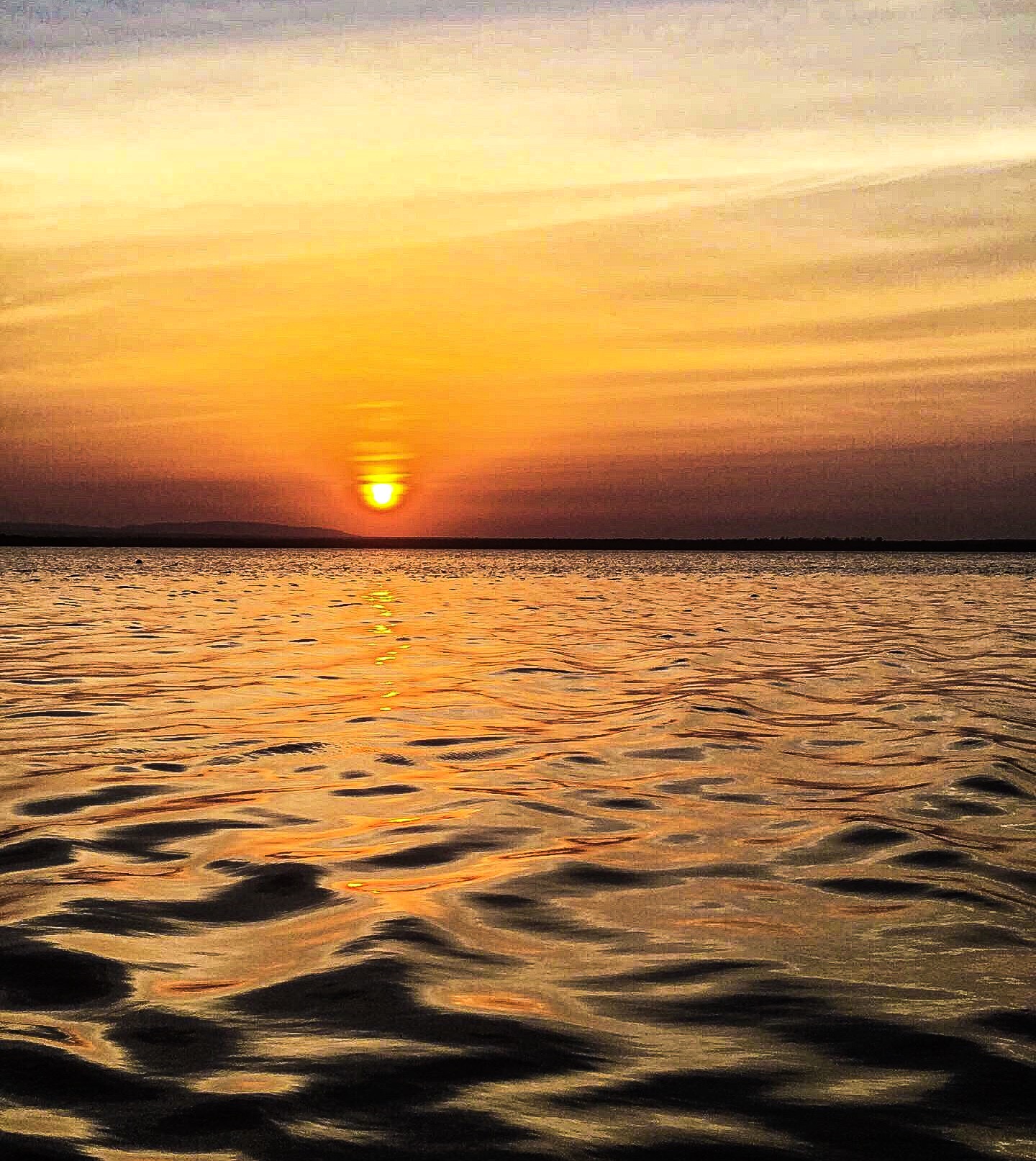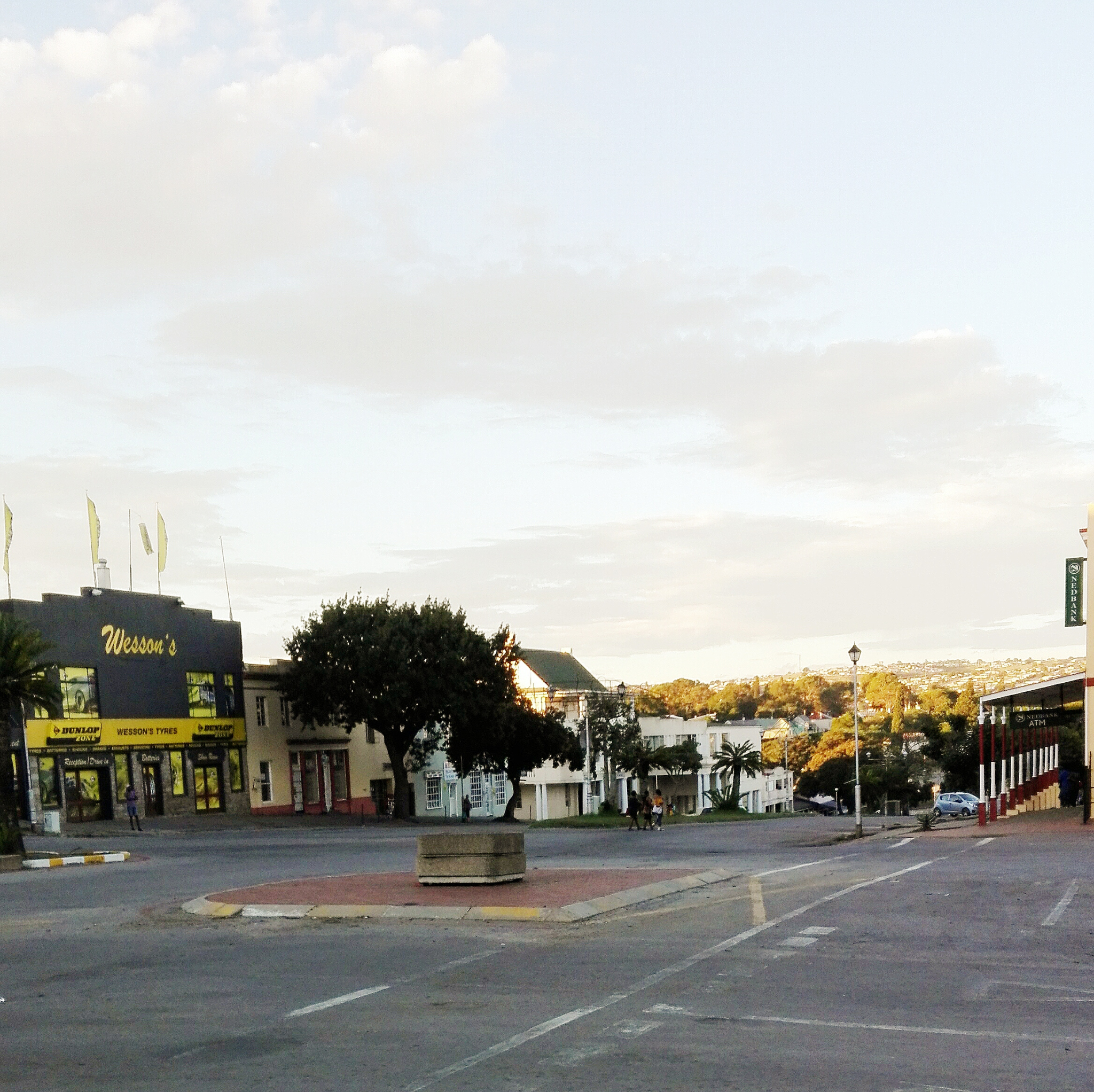
The Memorial Peace Museum
Growing up, I visited the memorial park with my father. He made sure I appreciated 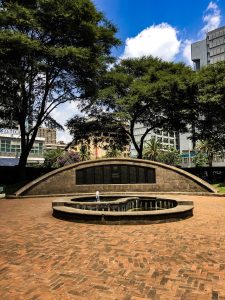 everything around me and I may not have recognized that then, but now I see the need to be very aware especially of my own country.
everything around me and I may not have recognized that then, but now I see the need to be very aware especially of my own country.
After the terrible attack this week, I felt this urge to go not just to the Memorial Park but particularly to the Peace Museum. After hours of being glued to my twitter feed and news updates that was the first place I wanted to go to because again, the gravity of just how much we lose in this attacks struck me. I wasn’t going there for closure. I went because I wanted to know what it means that we are as a nation are unbowed.
The Memorial Peace Museum commemorates the August 7th 1998 terror attack. Over 200 victims died and over 4000 injuries. There was a car bomb targeted for the US Embassy which is where the Memorial Park now sits. A corresponding attack also happened at the US Embassy in Tanzania on the same day. Making it an East African terror attack that hurt us both.
Today, the park is a peaceful place where couples relax, Bible study groups meet and pray and city business men finalize their proposals before a big meeting. Old friends meet here to chat a bit and take photos, students run off from class to chill here and on weekends parents bring their children to run in the manicured lawns, play with the filed pebbles and sit in the shade for an entrance fee of only Ksh. 30.
The Memorial Peace Museum is within the park, it has an exhibition, a memorial space 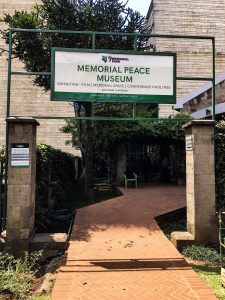 and offers conference facilities. I’ve never been in there. In all my years. When I speak to the polite guard all of a sudden there’s this solemn mood that sets in. Like I’m about to enter a shrine. I pay at the front desk and the lady directs me to the memorial room. Photography isn’t allowed here and the mood alone doesn’t ever allow you to take pictures. Its feels like a carnal sin. Standing there alone makes you run the questions in you head over and over again, ‘why does this keep happening?’ ‘Why us?’
and offers conference facilities. I’ve never been in there. In all my years. When I speak to the polite guard all of a sudden there’s this solemn mood that sets in. Like I’m about to enter a shrine. I pay at the front desk and the lady directs me to the memorial room. Photography isn’t allowed here and the mood alone doesn’t ever allow you to take pictures. Its feels like a carnal sin. Standing there alone makes you run the questions in you head over and over again, ‘why does this keep happening?’ ‘Why us?’
The room has the names of the victims of the attack, I count 219. For every victim there’s a Kenyan flag on the shelf. There is a shelf of objects retained from the site and stories of the owners of these items. Reading their stories is enough to bring tears to your eyes. It’s about husbands as written by their wives, mothers who talk of their children. It’s not just a story that we all need to be well told. It’s a story about real people whose lives are honored in this room.

Once you leave the memorial room there’s this beautiful pillar with quotes from noble personalities. At the top is one by Ngugi Wa Thiong’o that says,
” Our fathers fought bravely. But do you know the biggest weapon unleashed by the enemy against them? It was not the Maxim gun. It was division among them. Why? Because a people united in faith are stronger than the bomb.
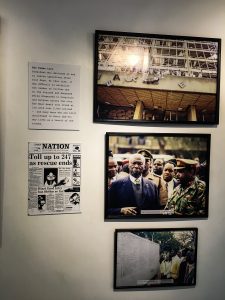 The exhibition tells a story every step of the way, there’s pictures on the walls lit with reading light from fixtures above. There’s no natural light from the outside. There’s no noise from outside. It’s just a space where the rest of the city is flushed out and you walk the journey of what happened 20 years ago as if you are teleported there. Seeing just how far we’ve come as a country.
The exhibition tells a story every step of the way, there’s pictures on the walls lit with reading light from fixtures above. There’s no natural light from the outside. There’s no noise from outside. It’s just a space where the rest of the city is flushed out and you walk the journey of what happened 20 years ago as if you are teleported there. Seeing just how far we’ve come as a country.
To realize just how unbowed we were as a nation then, when the attack happened response to request for blood donations was so overwhelming that all city blood banks were full within 24 hours. As you read through, when the attack happened Kenyans dug through the rubble with their bare hands to rescue those injured at a time when ethnic tensions were high. People didn’t even care for their safety when where we were tribalism would have broken the nation, all that was set aside and people came together because our nation was bleeding.
Coming here, I realized that despite all the issues we have as a country from tribalism, corruption and all that ails us, being Kenyan, being patriotic is somewhere deeply rooted inside us. Even though I don’t speak for everyone, there is this innate love for our country it doesn’t matter what International personalities paint us to be, it doesn’t matter how many times we are frustrated by the government. We all have that sense that this is our home and whatever happens it will always be our home. That really is what leave us unbowed.
As you finish reading through survivors stories and looking at the display you notice there are tiny stools.  Most of us have these stools in our shags. I learnt there’s a story about them. They symbolize something in the community. Something bigger, something deeper, that makes you want to own one and use it as an artifact that speaks to your cultural heritage. I want to own one and tell stories about it to whoever visits. (Of course I’m not telling you what they symbolize you need to go find out!)
Most of us have these stools in our shags. I learnt there’s a story about them. They symbolize something in the community. Something bigger, something deeper, that makes you want to own one and use it as an artifact that speaks to your cultural heritage. I want to own one and tell stories about it to whoever visits. (Of course I’m not telling you what they symbolize you need to go find out!)
The tour ends with a 15 minute documentary on the survivors. On what happened. A history class that we all need to take if you haven’t already. Timeless stories that simply couldn’t remain untold.
Western civilizations have done an impeccable job in recording their history. During the wars, during the scramble for Africa and all the discoveries ‘they made’ because of that we have a very Eurocentric view of even our history. Coming here made me realize that we need to do better now in having our own voice, tell our own story, recording our own history and be proud of the good and remain united during the bad.
The People Daily correctly put the headline as Kenya Unbowed on the 16th because through out all the terrors we face as a country as Ngugi Wa Thiong’o correctly put it, people united in faith are stronger than a bomb.
Pointers:
If you plan on going to the Museum here’s a few things you need to know.
- The entrance fee at the park is Ksh. 30 for citizens. This is to access the park alone and not the museum.
- The entrance fee at the museum for students is Ksh. 50 but you have to display your students ID. For residents it’s 100 (I’d recommend you carry your ID just in case) and for adults which I believe means foreigners is 150. You can go with you children who you’ll pay Ksh. 50 for.
- Photography is allowed in the exhibition areas. However, it’s not allowed in the memorial room where the names of the victims are. Recording of the documentary is also not allowed.
Finally, please visit the place. It’s a big part of our history as a country and it’ll cost you less than 200 bob! If you have trouble navigating or have questions there’s the amazing lady receptionist (I forgot to ask her name) or a guy called George who’s around. He’s chatty and will indulge you in all you need to know. At this point, what’s your excuse?
Disclaimer: All Photographs taken are by me. For any request to use them please contact me on info@glynismaina.co.ke



